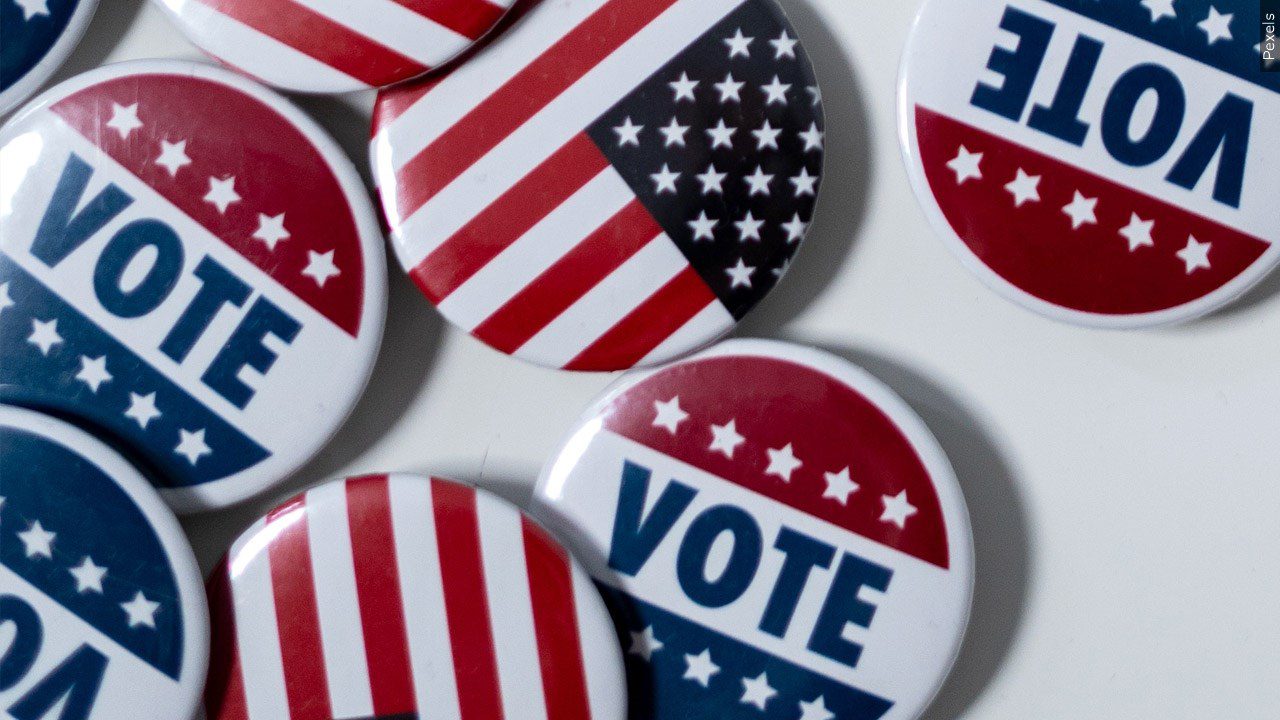Iowa: What to expect on election night

Courtesy: MGN / Pexels
(AP) – Iowa has historically been a battleground state but has taken a right turn in the past decade. Republicans won the governor’s office and the Iowa House in 2010 and maintain a strong likelihood of retaining both. Gov. Kim Reynolds is running ahead in fundraising and polling. Republicans won the Iowa Senate in 2016, and are well-positioned to retain control in that chamber.
Reynolds is pushing to end most abortions in the state, a position opposite of where most Iowans say they stand in polls. She’s worked to rally Republicans around a red-wave sweep of all major state elected offices.
Counter to that narrative, however, is a recent poll that shows longtime Republican Sen. Chuck Grassley facing his most challenging race yet against Mike Franken, a retired U.S. Navy admiral.
In 2018, three of the four U.S. House seats were occupied by Democrats but in the 2020 election that reversed, and Republicans now hold three of the four seats. Democratic incumbent Democrat Cindy Axne faces a significant challenge from Iowa Sen. Zach Nunn and at least one of the Republican-held seats appears to be in contention with a strong Democratic challenger.
In other statewide races, Democrats have held on to attorney general and state treasurer offices for decades with Tom Miller the longest-serving attorney general in the nation and Mike Fitzgerald the longest-serving state treasurer. State Auditor Rob Sand took the office from a Republican incumbent in 2018.
Since 2000, Iowa has voted for Democratic presidents three times and Republicans three times.
In presidential contests, Iowans voted for Al Gore in 2000 by less than one percentage point but voted with the nation in electing George W. Bush in 2004. Barack Obama won Iowa in 2008 and 2012 but Donald Trump won the state in 2016 and 2020.
In the most recent voter registration data, Republicans are 36.6% of the registered voters and Democrats are 31.9%. Voters registered as no party are 30.5%.
Here’s a look at what to expect on election night:
ELECTION NIGHT
Polls close at 8 p.m. local time.
HOW IOWA VOTES
Most Iowans vote in-person on Election Day. The state allows in-person absentee voting beginning 20 days before the election. All absentee ballots must be received by poll close on Election Day; processing can begin a day before the election. Nearly 100 percent of votes are counted on Election Day.
DECISION NOTES
AP will tabulate and declare winners in 103 contested elections in Iowa, including 10 statewide races and four U.S. House races. In the 2020 general election, AP first reported results within 15 minutes of polls closing and 99.9% of results were reported 3½ hours after polls close.
The AP may call a statewide or U.S. House race in which the margin between the top two candidates is 0.5% or less, if we determine the lead is too large for a recount to change the outcome.
The AP will not call down-ballot races on election night if the margin between the top two candidates is less than 2% or if the leading candidate is within 2% of the 50% runoff threshold. AP will revisit those races later in the week to confirm there aren’t enough outstanding votes left to count that could change the outcome.
WHAT ELSE SHOULD I KNOW?
Q: WHAT DID WE LEARN FROM THE PRIMARY?
A: Iowa Democrats changed directions in the primary by supporting Mike Franken, a retired U.S. Navy admiral instead of former U.S. Rep. Abby Finkenauer to run against incumbent Republican U.S. Sen. Chuck Grassley. Finkenauer had defeated a Republican incumbent in 2018 but served only one term, defeated in 2020 by Ashley Hinson. Finkenauer was one of the youngest elected House members and at age 33 made an issue of the generational difference with Grassley, 89.
Finkenauer nearly missed getting on the primary ballot after challenges were filed against her nominating petition claiming inadequate signatures. The Iowa Supreme Court, however, allowed her to be on the ballot. Franken, however, was favored by Democrats to take on Grassley and has proven to be a formidable challenger in the very close race.
Q: WHAT’S CHANGED SINCE THE PANDEMIC ELECTION OF 2020?
A: In 2021, the Republican-led legislature passed several voting law changes including shorter deadlines for absentee voting and new restrictions on the ability of local election officials to locate satellite voting sites. Counties are allowed one ballot drop box near the county election official’s office under video surveillance.
Polls now close at 8 p.m. instead of 9 p.m., and absentee ballots must be received by the county election official by 8 p.m. Election Day.
Lawmakers also placed new limits on who may return an absentee ballot for a voter.
Q: WHAT DO TURNOUT AND ADVANCE VOTE LOOK LIKE?
A: Turnout is projected to be 1.4 million. As of Oct. 25, 226,874 absentee ballots have been sent and 70,879 have been returned. Fifty-three percent of the absentee ballots were requested by registered Democrats and 33 percent were requested by registered Republicans.
Q: HOW LONG DOES COUNTING USUALLY TAKE?
A: Counting is usually completed within three to four hours after polls close.
Q: WHAT ARE THE PITFALLS WITH EARLY RETURNS?
A: Early/absentee returns tend to be skewed toward Democratic candidates. These results are typically among the first reported on Election Night.
Q: WHAT HAPPENS AFTER TUESDAY?
A: Votes are certified at the county canvass on Nov. 14 and the state canvass on Dec. 5.
___
Check out https://apnews.com/hub/explaining-the-elections to learn more about the issues and factors at play in the 2022 midterm elections.
Follow AP’s coverage of the elections at: https://apnews.com/hub/2022-midterm-elections